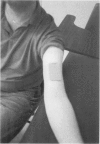Abstract
Objective:
To assess the therapeutic effects of flexible magnets on pain perception, intramuscular swelling, range of motion, and muscular strength in individuals with a muscle microinjury.
Design and Setting:
This experiment was a single-blind, placebo study using a repeated-measures design. Subjects performed an intense exercise protocol to induce a muscle microinjury. After pretreatment measurements were recorded, subjects were randomly assigned to an experimental (magnet), placebo (imitation magnet), or control (no magnet) group. Posttreatment measurements were repeated at 24, 48, and 72 hours.
Subjects:
Forty-five healthy subjects participated in the study.
Measurements:
Subjects were measured repeatedly for pain perception, upper arm girth, range of motion, and static force production. Four separate univariate analyses of variances were used to reveal statistically significant mean (±SD) differences between variables over time. Interaction effects were analyzed using Scheffe post hoc analysis.
Results:
Analysis of variance revealed no statistically significant (P > .05) mean differences between conditions for any dependent pretreatment and posttreatment measurements. No significant interaction effects were demonstrated between conditions and times.
Conclusions:
No significant therapeutic effects on pain control and muscular dysfunction were observed in subjects wearing flexible magnets.
Keywords: static magnetic field, magnetohydrodynamic effect, Hall voltage
Full text
PDF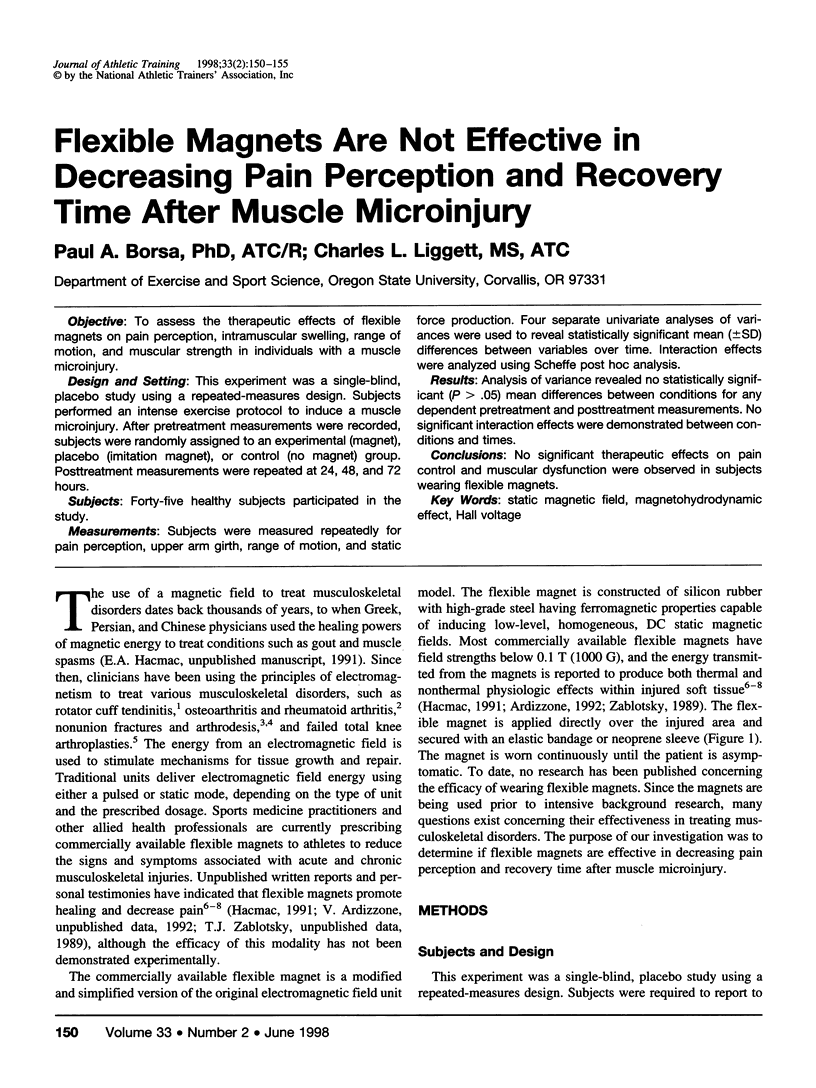
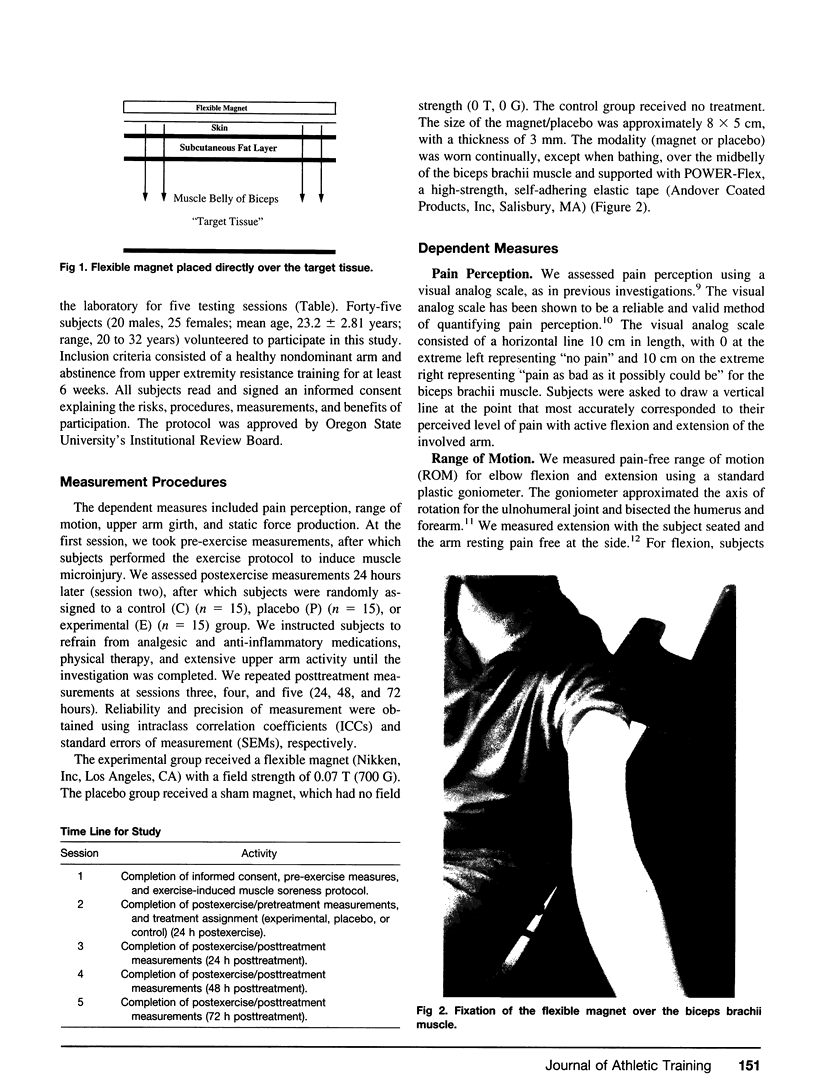
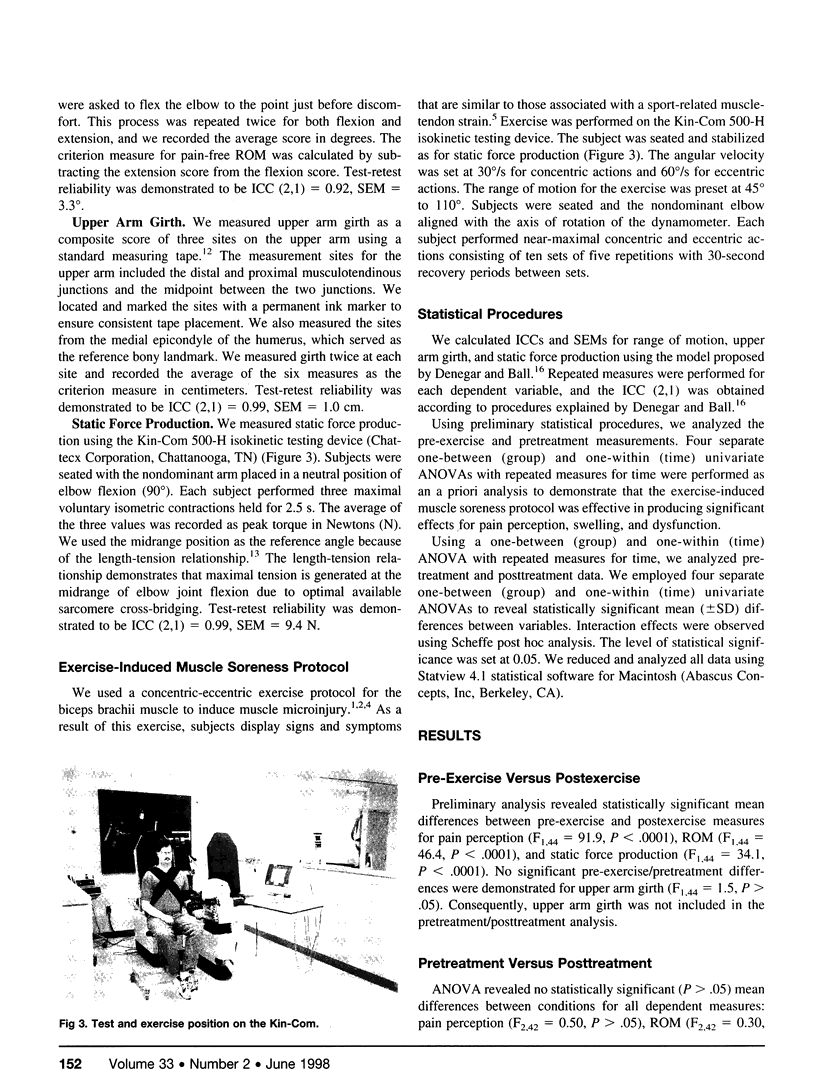
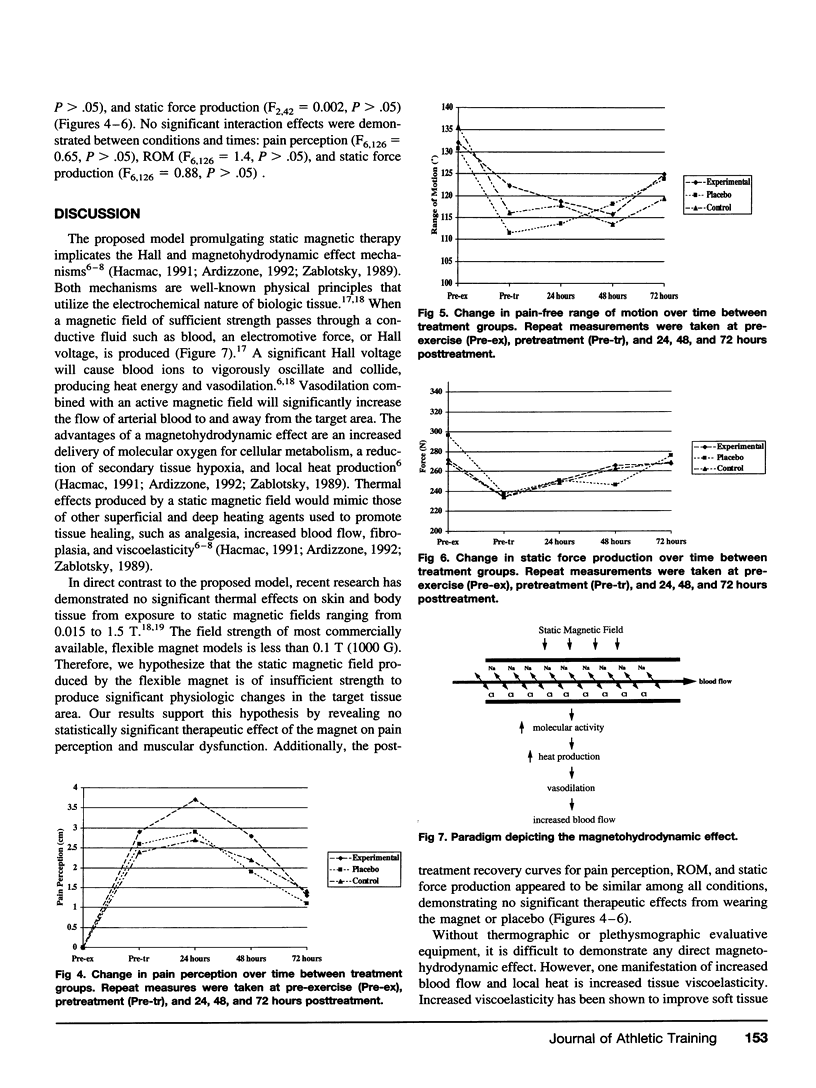
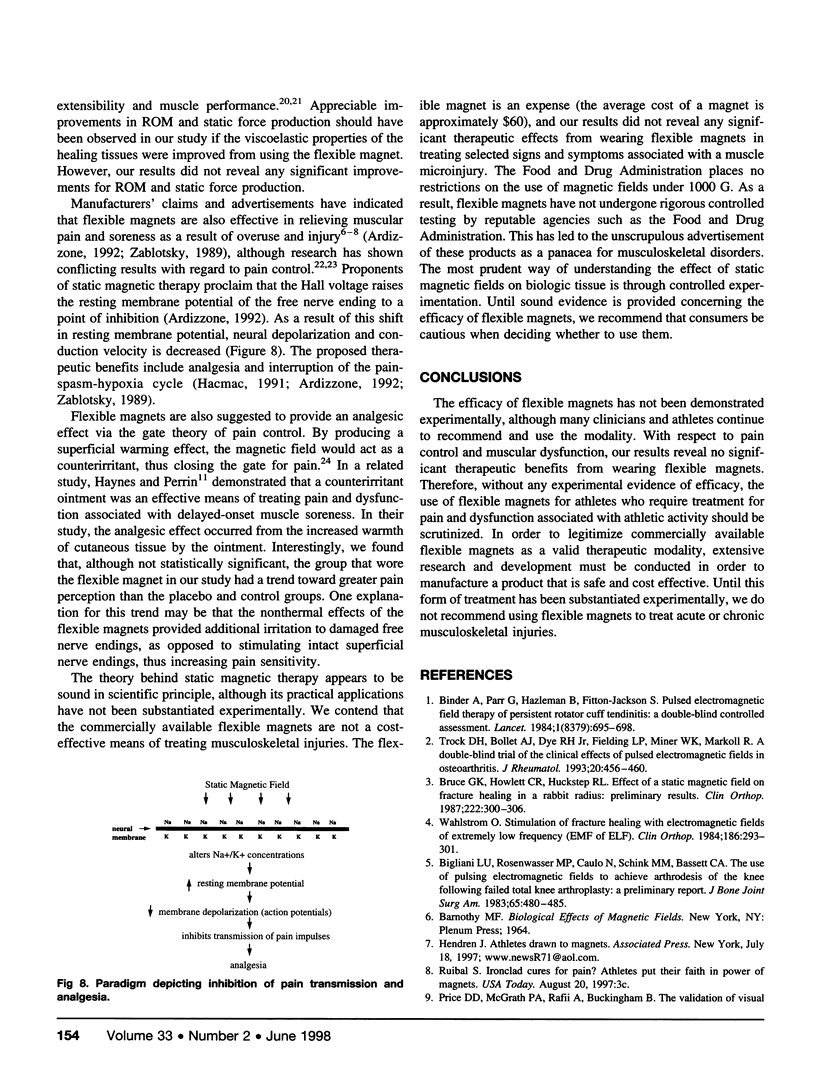
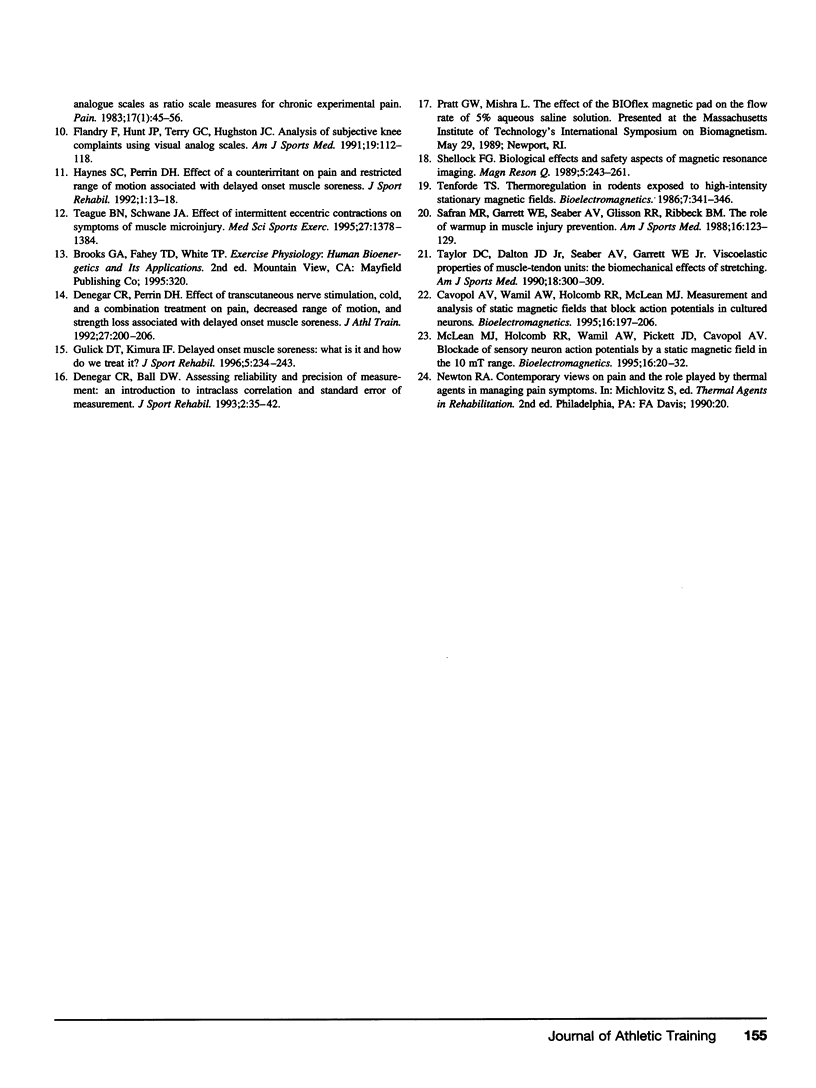
Images in this article
Selected References
These references are in PubMed. This may not be the complete list of references from this article.
- Bigliani L. U., Rosenwasser M. P., Caulo N., Schink M. M., Bassett C. A. The use of pulsing electromagnetic fields to achieve arthrodesis of the knee following failed total knee arthroplasty. A preliminary report. J Bone Joint Surg Am. 1983 Apr;65(4):480–485. [PubMed] [Google Scholar]
- Binder A., Parr G., Hazleman B., Fitton-Jackson S. Pulsed electromagnetic field therapy of persistent rotator cuff tendinitis. A double-blind controlled assessment. Lancet. 1984 Mar 31;1(8379):695–698. doi: 10.1016/s0140-6736(84)92219-0. [DOI] [PubMed] [Google Scholar]
- Bruce G. K., Howlett C. R., Huckstep R. L. Effect of a static magnetic field on fracture healing in a rabbit radius. Preliminary results. Clin Orthop Relat Res. 1987 Sep;(222):300–306. [PubMed] [Google Scholar]
- Cavopol A. V., Wamil A. W., Holcomb R. R., McLean M. J. Measurement and analysis of static magnetic fields that block action potentials in cultured neurons. Bioelectromagnetics. 1995;16(3):197–206. doi: 10.1002/bem.2250160308. [DOI] [PubMed] [Google Scholar]
- Denegar C. R., Perrin D. H. Effect of transcutaneous electrical nerve stimulation, cold, and a combination treatment on pain, decreased range of motion, and strength loss associated with delayed onset muscle soreness. J Athl Train. 1992;27(3):200–206. [PMC free article] [PubMed] [Google Scholar]
- Flandry F., Hunt J. P., Terry G. C., Hughston J. C. Analysis of subjective knee complaints using visual analog scales. Am J Sports Med. 1991 Mar-Apr;19(2):112–118. doi: 10.1177/036354659101900204. [DOI] [PubMed] [Google Scholar]
- McLean M. J., Holcomb R. R., Wamil A. W., Pickett J. D., Cavopol A. V. Blockade of sensory neuron action potentials by a static magnetic field in the 10 mT range. Bioelectromagnetics. 1995;16(1):20–32. doi: 10.1002/bem.2250160108. [DOI] [PubMed] [Google Scholar]
- Price D. D., McGrath P. A., Rafii A., Buckingham B. The validation of visual analogue scales as ratio scale measures for chronic and experimental pain. Pain. 1983 Sep;17(1):45–56. doi: 10.1016/0304-3959(83)90126-4. [DOI] [PubMed] [Google Scholar]
- Safran M. R., Garrett W. E., Jr, Seaber A. V., Glisson R. R., Ribbeck B. M. The role of warmup in muscular injury prevention. Am J Sports Med. 1988 Mar-Apr;16(2):123–129. doi: 10.1177/036354658801600206. [DOI] [PubMed] [Google Scholar]
- Shellock F. G. Biological effects and safety aspects of magnetic resonance imaging. Magn Reson Q. 1989 Oct;5(4):243–261. [PubMed] [Google Scholar]
- Taylor D. C., Dalton J. D., Jr, Seaber A. V., Garrett W. E., Jr Viscoelastic properties of muscle-tendon units. The biomechanical effects of stretching. Am J Sports Med. 1990 May-Jun;18(3):300–309. doi: 10.1177/036354659001800314. [DOI] [PubMed] [Google Scholar]
- Teague B. N., Schwane J. A. Effect of intermittent eccentric contractions on symptoms of muscle microinjury. Med Sci Sports Exerc. 1995 Oct;27(10):1378–1384. [PubMed] [Google Scholar]
- Tenforde T. S. Thermoregulation in rodents exposed to high-intensity stationary magnetic fields. Bioelectromagnetics. 1986;7(3):341–346. doi: 10.1002/bem.2250070310. [DOI] [PubMed] [Google Scholar]
- Trock D. H., Bollet A. J., Dyer R. H., Jr, Fielding L. P., Miner W. K., Markoll R. A double-blind trial of the clinical effects of pulsed electromagnetic fields in osteoarthritis. J Rheumatol. 1993 Mar;20(3):456–460. [PubMed] [Google Scholar]
- Wahlström O. Stimulation of fracture healing with electromagnetic fields of extremely low frequency (EMF of ELF). Clin Orthop Relat Res. 1984 Jun;(186):293–301. [PubMed] [Google Scholar]



